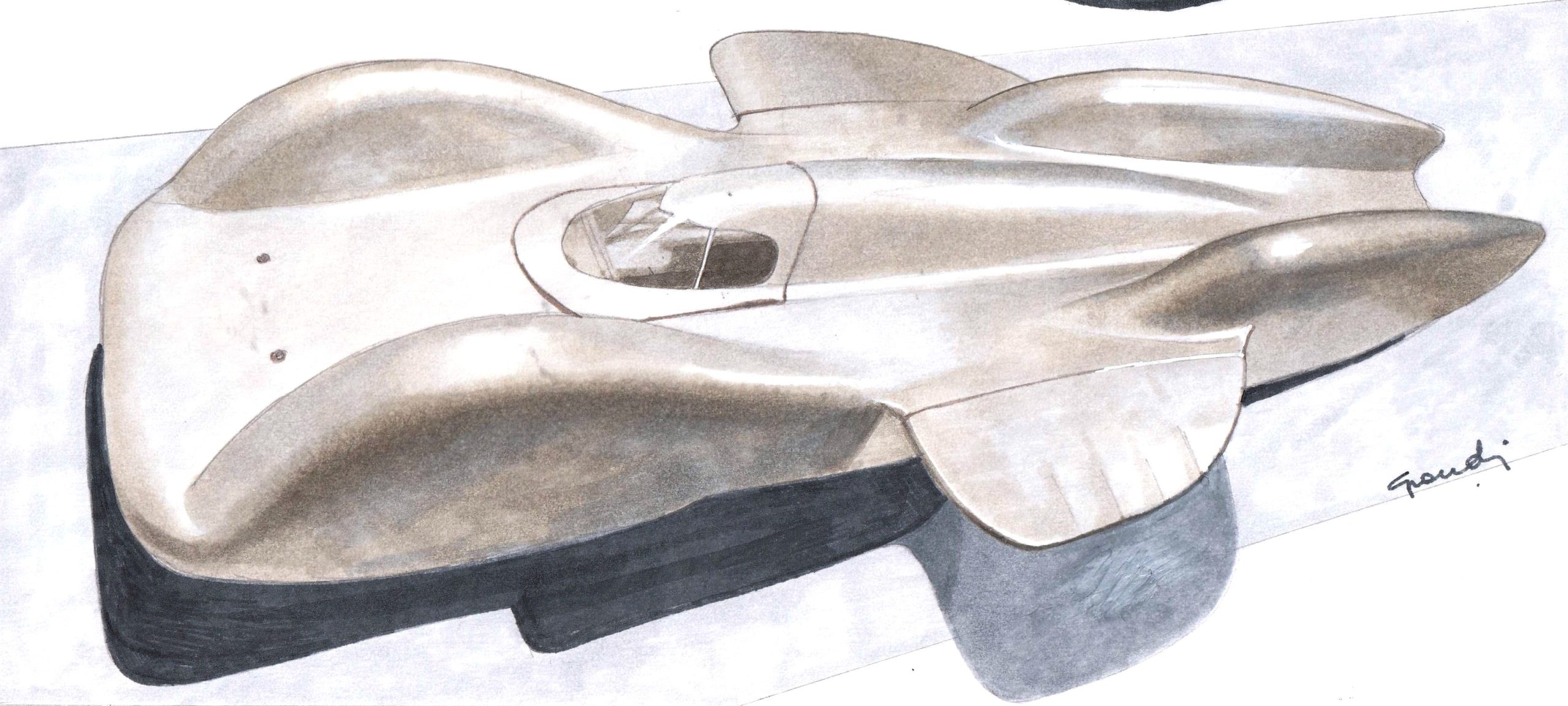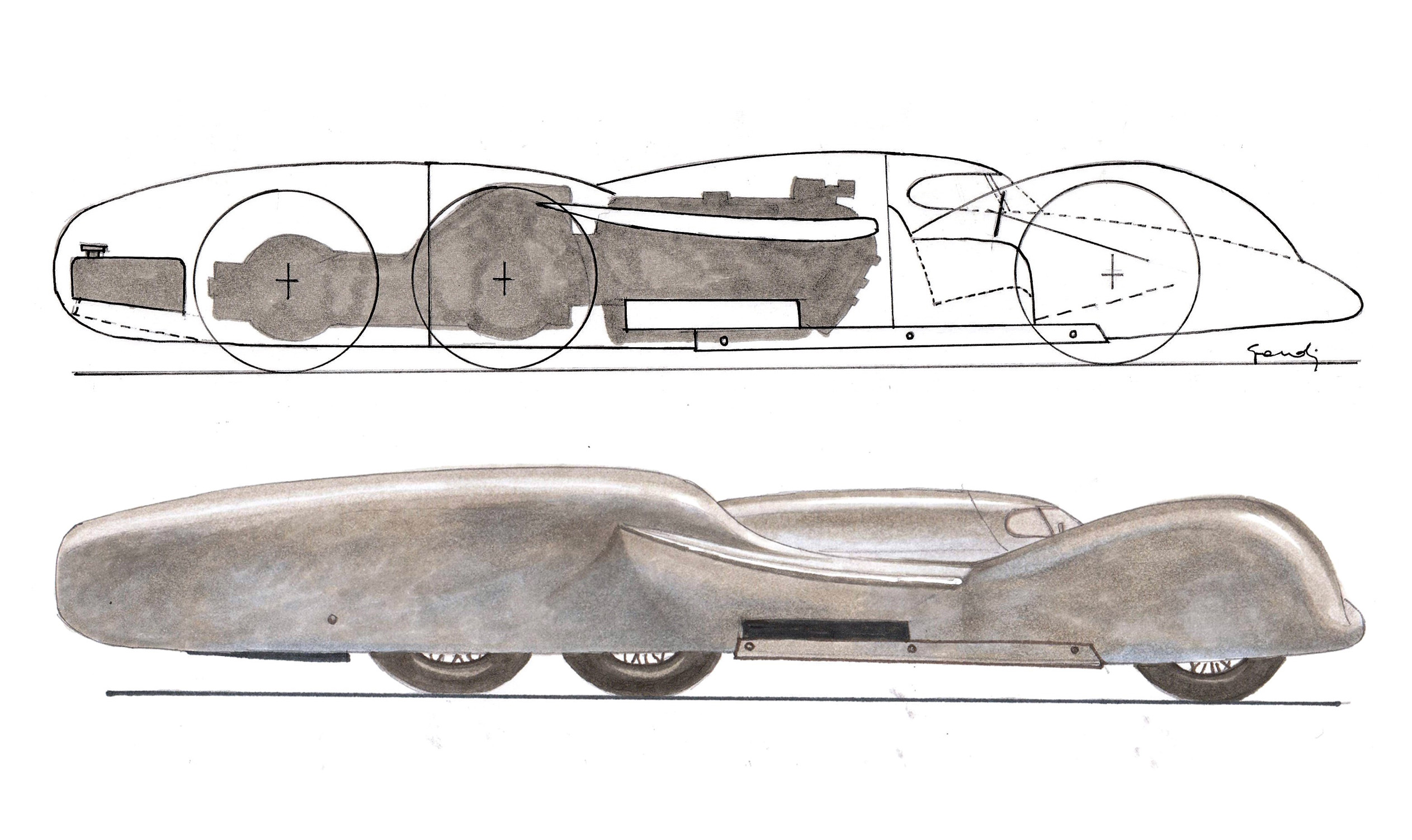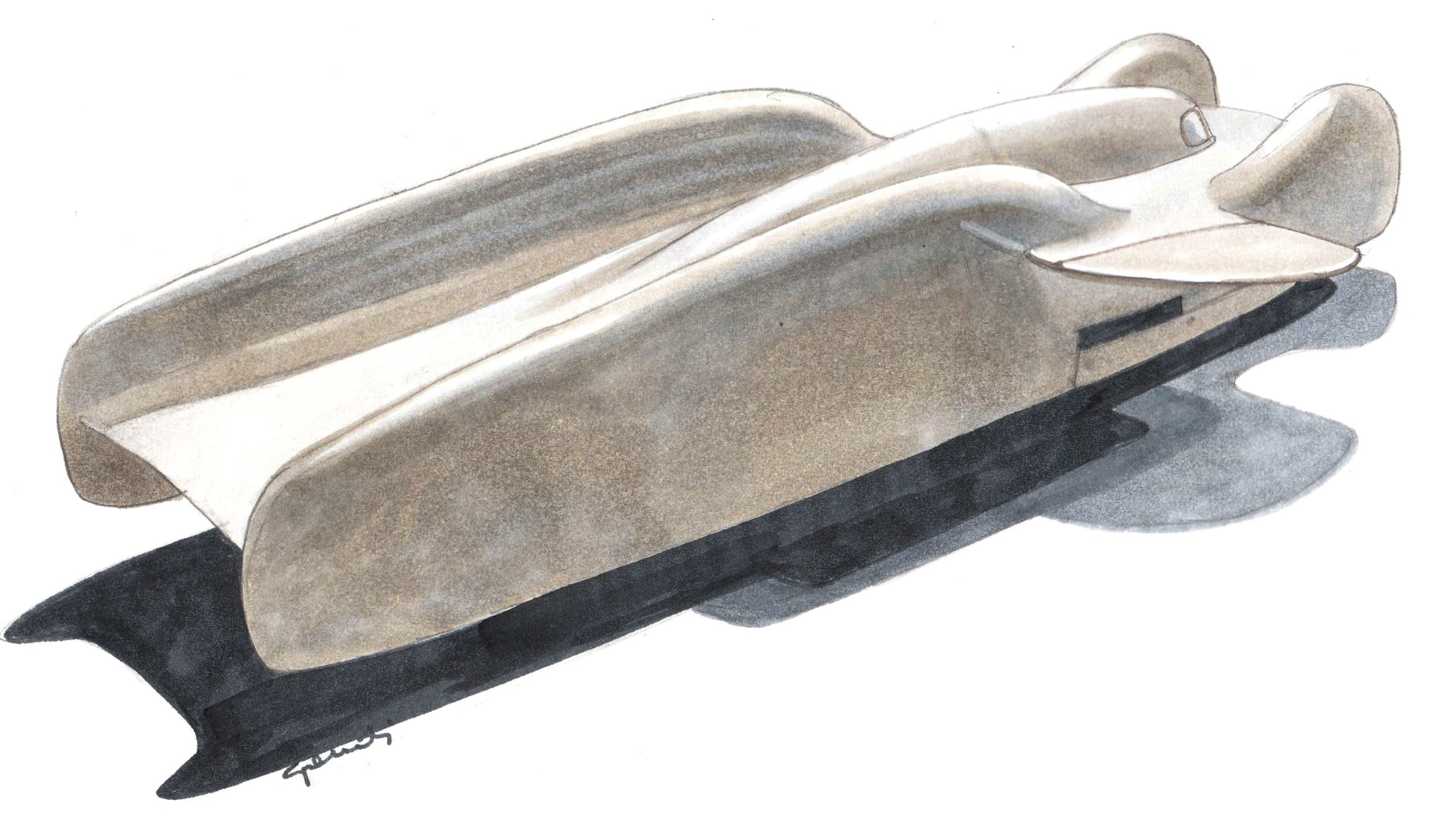Über Alles. The advent of friendly air
With the valuable support, depth of knowledge and illustrative talent of Prof. Massimo Grandi
Photo credit: Some images are taken from the book Asi Service "Quando le disegnava il vento" by Massimo Grandi
January 1940 was meant to see the story of automotive aerodynamics research reaching its pinnacle. The events that we have recounted over 43 chapters, each enhanced by the magical and wonderfully homogeneous illustrations created by Massimo Grandi, tell the story of a time of visionaries and dreamers. The 1939 T80, created at the behest of the Third Reich, and of Hitler in person, in order to give the world a sign of Germany’s supremacy, was built with the aim of beating the world land speed record by reaching 750 km/h. The project involved three key men: driver, Hans Stuck, technical director, Ferdinand Porsche, and aerodynamics specialist, Josef Mikci.
The important aspect, from our perspective, is the technical turning point that this car represented, thanks to Mikci’s development of a down force, designed to prevent the car from taking off at such incredible speed. Never before had a project been based on a design feature that embraced and exploited the air, turning it from an enemy into a friend. Now of course, we know perfectly well from Formula 1 — among other areas, it has to be said — that exploiting the down force allows you to reach exceptional performance levels, even in the presence of a very high CX. For the T80, all this was still too far in the future, and indeed its CX really did seem impossibly low: just 0.18 for a car measuring over 8 meters long and 3.6 m wide (including its lateral stabilizers). But the door to the use of air as a means of increasing ground adherence and transmitting power had finally been opened.

In addition to its aerodynamic perfection, this stunning car (now exhibited at the Mercedes Museum in Stuttgart) boasted powerful mechanics based on the engine built by Daimler Benz for the Messerschmitt fighter plane. Just to be clear, we are talking about a 44,500 cc V12 with compressor, delivering 3000 HP. To keep all that power on the ground, Porsche had conceived a rear axle with four-wheel drive transmission, directly connected to the engine, which was located behind the driver. This story could have been much longer, but, like others, it was interrupted by a tragic event, albeit on this occasion one involving the entire world.

The car, painted black with a large swastika on the front, was all set to smash the world record, but the attempt, scheduled to take place in January 1940, had to be shelved: the German army had already invaded Poland and war in Europe had become a reality. As a result, Stuck never got to see his name in the record books. The car survived the war and there was talk of trying again, but in the post-war world technology had moved on, and jet engines were the ones setting records.
In short, over a long period of time, the approach to aerodynamics had gradually changed, bringing us closer, step by step, to the point at which air could be embraced as a friend.
